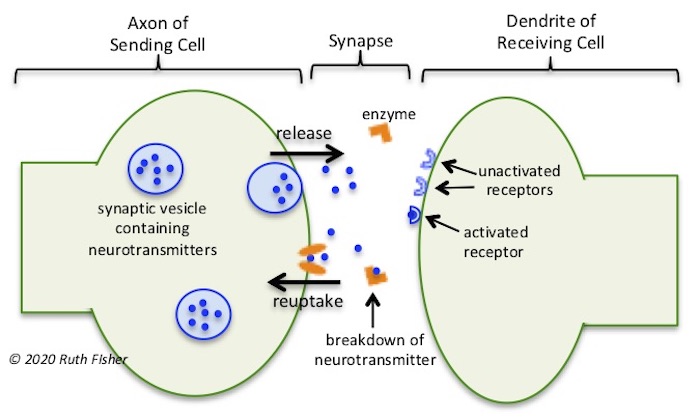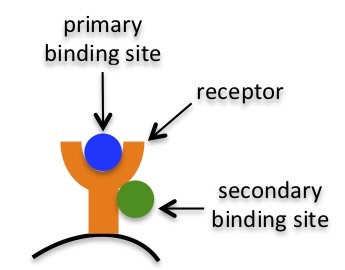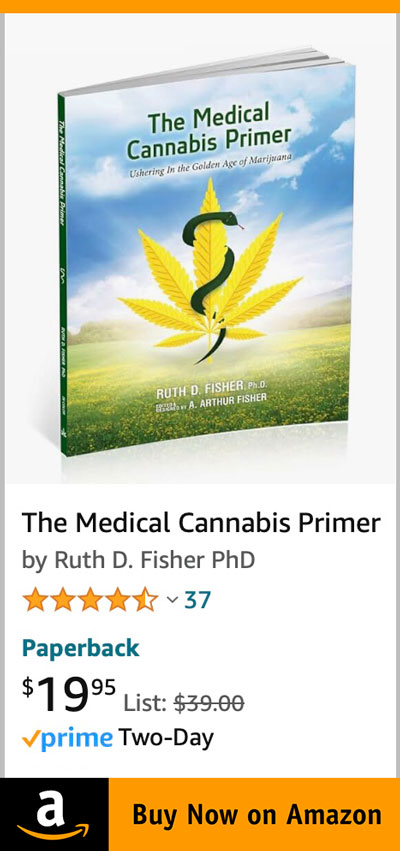Blogs
Understanding Cannabis’s Entourage Effect
Ruth Fisher
Benefits of Whole Plant Medicine
Whole plant medicine is based on the idea that many different elements of a medicinal plant work together in our bodies to create beneficial outcomes. That is, the interactions of different compounds create an entourage effect or synergy, where joint outcomes generated by the plant as a whole are better than outcomes achieved using isolated ingredients from the plant. Modern medicine recognizes the benefits of combining different pharmaceuticals into drug cocktails or combination therapies to improve outcomes for patients being treated for HIV, hepatitis C, autoimmune diseases, and mood disorders, among other others.[1]
Advocates of whole plant medicine describe several interconnected benefits:
- Improved Efficacy: By combining multiple components of a plant, patients often end up achieving better therapeutic effects. [2]
- Improved Tolerability: By combining multiple components of a plant, patients often end up suffering from fewer or less severe unwanted side effects. [3]
- Reduced Tolerance/Resistance: By combining multiple components of a plant, patients are often more resistant to building up a tolerance or having their disease become resistant to the medication.[4]
Generally speaking, when a drug is more effective, we often use less of it, which then saves money, reduces the severity of side effects and prevents us from building up a tolerance. Whole plant medicine thus has the potential to provide fantastic benefits over single-ingredient medications.
Advocates of medical cannabis tout the ability of whole plant cannabis to provide better outcomes than isolated cannabis extracts because whole plant cannabis benefits from the entourage effect. But how, exactly, does cannabis’s entourage effect work? What are the mechanisms involved in creating synergies between different components of the cannabis plant? That is the question this investigation seeks to answer.
Brief Overview of Cell Signaling
Before we proceed to understanding exactly how the various compounds in cannabis interact with one another to create the entourage effect, we need to understand some basics about how the cells in our bodies communicate with each other.
Much of the cannabis activity in our bodies takes place in neurons, which are the cells in the Nervous System. The Nervous System detects environmental changes within and outside of our bodies, then it works with our other body systems to respond to those changes.[5]
Figure 1 provides an illustration of two neurons. Neurons communicate with each other through interactions between the axons of one neuron and the dendrites of another neuron.
Figure 1

To provide some perspective, the human brain has about 86 billion neurons,[6] each of which is connected to 5,000 to 200,000 other neurons,[7] and each of which sends signals between 5 and 50 times per second.[8]
Figure 2 illustrates how neurons communicate with each other by sending signals (neurotransmitters) from the axon terminal of the sending cell, across the gap between the two cells (the synapse), and to the dendrites of the receiving cell. Actions are generated when neurotransmitters from sending cells activate receptors of receiving cells.
Figure 2

Notably, receptors have primary binding sites that serve as the main locus of activity. Yet, receptors also have secondary binding sites where additional molecules can bind and affect the reactions caused by the primary binding (see Figure 3). This issue will be important for understanding allosteric modulation discussed below.[9]
Figure 3

Returning to Figure 2, cell-to-cell communications work as follows.
- Neurotransmitters are produced (synthesized) in sending cells
- When ready to be released, neurotransmitters are transported by synaptic vesicles to the border of the axon and synapse.
- There, neurotransmitters in the vesicle are released into the synapse,
After neurotransmitters are released into the synapse, one of three events take place:[10]
- Neurotransmitters travel across the synapse and activate receptors on the receiving cell. Once neurotransmitters have activated receptors, they are released back into the synapse to be broken down; or
- Neurotransmitters are broken down by enzymes in the synapse; or
- Neurotransmitters are taken back into the sending cell (reuptake) for retransmission or breakdown.
The cannabinoids (THC, CBD, CBG, etc.) in cannabis are plant-created neurotransmitters that mimic the neurotransmitters created in our bodies (AEA, 2-AG, etc.).
Neurotransmitter activity can thus be increased through any of several mechanisms, including:
- Increasing neurotransmitter production (synthesis) in the sending cell
- Increasing neurotransmitter release from the sending cell into the synapse
- Decreasing neurotransmitter breakdown in the synapse by decreasing enzyme activity
- Decreasing neurotransmitter reuptake from the synapse back into the sending cell
- Increasing the activity of activated receptors
Drug cocktails and cannabis’s entourage effect may increase neurotransmitter activity by simultaneously invoking any one or more of these mechanisms.
Mechanisms of Synergy in Whole Plant Medicine
Now that we know the specific benefits of whole plant medicine, and we know a bit about how cell-to-cell communication works, we can respond to the question: how, exactly, do the different constituents of a plant work together in our bodies to generate synergistic effects? That is, what are the entourage effect’s mechanisms of action?
As for cannabis, there are two basic mechanisms of action involved in its entourage effect: pharmacokinetic interactions and pharmacodynamics interactions.
Pharmacokinetic Interactions
Pharmacokinetic interactions occur when one or more molecules in a medication affect the absorption, distribution, metabolism, or excretion of other molecules by our bodies.[11]
One of the big problems with cannabis is its low bioavailability. “A drug's bioavailability can be defined as the proportion of the drug that reaches its site of action.” The bioavailability of a cannabis dose is largely determined by the user’s mode of ingestion. Users can smoke or vape cannabis, they can take it sublingually (under the tongue), they can take it orally (through pills or edibles), and they can take it topically (through the skin). The specific mode of ingestion used will affect the amount of cannabinoids that are absorbed into the body. For example, [12]
- If you smoke cannabis flower that contains 20 mg of THC, only about 3 – 4 mg of those 20 mg of THC in the flower will reach your cannabinoid receptors.
- If you vape cannabis flower or oil that contains 20 mg of THC, about 8 – 12 mg of those 20 mg of THC will reach your cannabinoid receptors.
- If you take a dose of tincture sublingually that contains 20 mg of THC, only about 3 – 6 mg of those 20 mg of THC will reach your cannabinoid receptors.
- And if you take your 20 mg dose of THC orally, only about 1 – 2 mg of the 20 will reach your cannabinoid receptors.
Scientists have shown that a greater portion of cannabinoids are absorbed, distributed, and metabolized when cannabis is ingested in whole plant (extract) form as compared to ingestion of cannabis isolates.[13] Specific examples of pharmacokinetic interactions between different substances in cannabis include the following.
Absorption: Myrcene enhances skin permeability, enabling cannabinoids to be absorbed more easily in transdermal applications.[14] Similarly, “with the assistance of terpenoids like caryophyllene, absorption of cannabinoids can be increased.”[15]
Distribution: It is claimed that myrcene increases the permeability of the blood brain barrier, thereby enabling cannabinoids to more easily pass into the brain.[16] Similarly, CBD boosts brain penetration of THC by inhibiting two proteins (BCRP and PGP) that prevent chemicals from permeating into the brain.[17]
Metabolization: When cannabis is taken orally, it passes through the digestive system and is processed by the liver. Enzymes in the liver break down cannabinoids, accounting for the low bioavailability of oral cannabis. However, CBD inhibits enzymes in the liver that break down THC. As a result, when THC and CBD are taken together, more THC is absorbed by the body than when THC is taken alone. [18]
Pharmacodynamic Interactions
Pharmacodynamic interactions occur when one or more components of a medication affect another molecule’s actions, namely the other molecule’s ability to bind to a receptor, its postreceptor effects, and/or its chemical interactions.[19] These types of interactions can take several forms, where the interactions may lead either to enhanced (synergism) or decreased (antagonism) activity. [20] More specifically, the interactions can be divided into three subgroups, where multiple chemicals interact with each other either by (i) binding to the same receptor, (ii) binding to different receptors, and/or (iii) interfering with the control mechanism
Different Compounds Bind to the Same Receptor
Different chemicals can interact with one another if they both bind to the same receptor, either at the same site on that receptor (homodynamic interactions) or at different sites on the same receptor (heterodynamic interactions, also called allosteric modulation).[21]
As an example, perhaps one of the most well-known aspects of the entourage effect is the ability of CBD to mitigate some of the less desirable effects of THC, such as the potential for THC to be intoxicating or create feelings of anxiety or paranoia. This happens when CBD crowds out the ability of THC to bind to CB1 receptors. Specifically, Both THC and CBD can bind to CB1 receptors. THC is an agonist, which means that if it binds to a receptor, it can cause an action.
CBD, on the other hand, may either act as an antagonist or a negative allosteric modulator.
If CBD acts as an antagonist at the CB1 receptor, it crowds out activity by THC indirectly, by preventing that receptor from causing an action. More specifically, when CBD binds to CB1, it may not cause an action; yet, by occupying that receptor, CBD prevents THC from binding to that same receptor and causing an action. In other words, when CBD is taken with THC, CBD prevents THC from binding to “too many” receptors and causing “too much” activity. [22]
Alternatively, if CBD acts as a negative allosteric modulator at CB1, then it binds to the receptor at a secondary site. At the secondary location, CBD decreases the activity (“turns the volume down,” so-to-speak) of the primary binder at the receptor, in this case THC.[23]
Of course, these interactions between THC and CBD can be complicated. One researcher aptly noted that the net effects of interactions between the two cannabinoids will depend on “the size of the CBD dose, the cannabinoid ratio, and the time each was taken.”[24]
Another example of cannabis’s entourage effect involving allosteric modulations involves synergies between cannabinoids and terpenes. Specifically, “CB1 receptor activation is potentiated by terpenes acting as positive allosteric modulators; e.g., less THC is needed to generate the same effect.” [25]
Different Compounds Bind to Different Receptors
Different chemicals can also interact with one another by binding to different receptors.
Drug cocktails were previously mentioned as a means used by traditional healthcare providers of better attacking complex diseases. A pair of researchers elegantly describe how “multi-drug strategies” are being used to fight cancer by using different active ingredients in the drug cocktails that act on different receptors, thereby affecting different processes:[26]
The multi-drug strategy is based on a long awareness that many diseases have a multi-causal etiology and a complex pathophysiology. As we know from clinical studies carried out in both therapeutic disciplines, diseases can obviously be treated more effectively with well-chosen pharmaceutical combinations than with a single drug.
…
The idea is to fight the tumor via a kind of concerted action not through direct destruction of the tumor but rather by suppression or activation of different processes which are essential for the tumor’s survival (e.g. by angiogenesis and oncogene inhibition, induction of apoptosis, activation of the immune system or combating inflammatory processes).
Just like in drug cocktails, the entourage effect in whole plant cannabis works by having different constituents of the plant (e.g., cannabinoids, terpenes, etc.) bind to different receptors in a way that promotes complementary therapeutic activity.[27] Professor of Pot provides several examples of these types of entourage effects for cannabis: [28]
- THC-induced sedation is potentiated by myrcene acting at GABA-A receptors [GABA-A receptors inhibit neurotransmission; benzodiazepine acts on the GABA-A.[29]]
- THC-induced anxiety is reduced by CBD acting at 5-HT1A [serotonin] receptors.
- CBD reduces psychosis-like effects caused by THC by acting on the dopamine system.
- Myrcene amplifies sedative effects of THC through the GABA system.
- Pinene improves THC-induced memory deficits through the acetylcholine system.
Control Mechanism Interference
Finally, different chemicals can also interact with one another by interference with one another’s control mechanisms. [30]
This control mechanism was not discussed much in the literature.
Obstacles to Whole Plant Medicine
Whole plant medicine benefits from the ability to generate entourage effects among various compounds in a plant. Traditional, single-molecule isolates lack the ability to provide this benefit. However, there are several serious obstacles that must be overcome before the “whole plant medicine” approach can become feasible on a widespread scale in the U.S.:[31]
- Quality control is poor, resulting in potentially contaminated, adulterated, less effective, or even unsafe herb products. The Food and Drug Administration (FDA) does not closely monitor herbal medicine products as it does for medical products.
- The potency of botanical extracts is inconsistent because the environment and weather affect each year's crop of plants.
- Botanical products are not standardized due to insufficient knowledge and understanding of all the components that contribute to the therapeutic effect.
The quality control problems in cannabis must be addressed before whole plant cannabis can be accepted as medicine by the traditional healthcare community. At the same time, however, the problems of using whole plant cannabis associated with inconsistency and lack of standardization could be vastly mitigated without having to resort to purified isolates. Specifically, by requiring manufacturers to provide clear, comprehensive, accurate profiles of all (active) ingredients in plants or extracts, consumers would have the information they need to adjust their doses to account for any batch-to-batch variations in profiles of ingredients.
References
[1] Prof Pot (2017, Jun 9). The Cannabis Entourage Effect – Fake News? Retrieved from http://profofpot.com/entourage-effect-fake-news/
[2] Prof Pot (2017, Jun 9). The Cannabis Entourage Effect – Fake News? Retrieved from http://profofpot.com/entourage-effect-fake-news/
[3] Prof Pot (2017, Jun 9). The Cannabis Entourage Effect – Fake News? Retrieved from http://profofpot.com/entourage-effect-fake-news/
[4] Wagner, H. and Ulrich-Merzenich, G. (2009) Synergy research: Approaching a new generation of phytopharmaceuticals. Retrieved from https://www.researchgate.net/publication/24002332_Synergy_research_Approaching_a_new_generation_of_phytopharmaceuticals
[5] Wikipedia contributors. (2020, June 13). Nervous system. In Wikipedia, The Free Encyclopedia. Retrieved from https://en.wikipedia.org/w/index.php?title=Nervous_system&oldid=962293366
[6] Neuroscience for Kids. Retrieved from https://faculty.washington.edu/chudler/cells.html
[7] Stufflebeam, R. (2008). Neurons, Synapses, Action Potentials, and Neurotransmission. Retrieved from http://www.mind.ilstu.edu/curriculum/neurons_intro/neurons_intro.php
[8] Brain Neurons & Synapses (2019, Sep 27). Retrieved from http://www.human-memory.net/brain_neurons.html
[9] Wikipedia contributors. (2020, June 22). Drug interaction. In Wikipedia, The Free Encyclopedia. Retrieved from https://en.wikipedia.org/w/index.php?title=Drug_interaction&oldid=963925179
[10] Synaptic Transmission: A Four Step Process. Retrieved from https://web.williams.edu/imput/synapse/pages/introduction.htm
[11] Ratain, M. and Plunkett, Jr, W. (2003). Principles of Pharmacokinetics. Retrieved from https://www.ncbi.nlm.nih.gov/books/NBK12815/
[12] See, for example, Huestis, M. (2007). Human Cannabinoid Pharmacokinetics. Retrieved from https://www.ncbi.nlm.nih.gov/pmc/articles/PMC2689518/
[13] Russo, R. and Guy, G. (2005). A tale of two cannabinoids: The therapeutic rationale for combining tetrahydrocannabinol and cannabidiol. Retrieved from https://www.theroc.us/researchlibrary/Russo_A tale of two cannabinoids.pdf
[14] Schmitt, S. et al (2009).Cooperative Interaction of Monoterpenes and Phenylpropanoids on the in vitro Human Skin Permeation of Complex Composed Essential Oils. Retrieved from https://www.thieme-connect.de/products/ejournals/abstract/10.1055/s-0029-1185744
[15] Dr. Malik Burnett. Medical Marijuana: Much More Than Just THC and CBD https://www.medicaljane.com/2014/05/14/thc-cbd-and-more-the-entourage-effect-of-whole-plant-cannabis-medicine/
[16] Hartsel, J. et al. (2016). Cannabis sativa and Hemp. Retrieved from https://www.sciencedirect.com/science/article/pii/B978012802147700053X?via%3Dihub
[17] Prof Pot (2017, Jun 19). 3 Mechanisms of the Cannabis Entourage Effect. Retrieved from http://profofpot.com/mechanisms-cannabis-entourage-effect/
[18] Prof Pot (2017, Jun 19). 3 Mechanisms of the Cannabis Entourage Effect. Retrieved from http://profofpot.com/mechanisms-cannabis-entourage-effect/
[19] Farinde, A. (2019, Jun). Overview of Pharmacodynamics. Retrieved from https://www.merckmanuals.com/professional/clinical-pharmacology/pharmacodynamics/overview-of-pharmacodynamics
[20] Yartsev, A. Mechanisms of pharmacodynamic drug-drug interactions. Retrieved from https://derangedphysiology.com/main/cicm-primary-exam/required-reading/variability-drug-response/Chapter%20219/mechanisms-pharmacodynamic-drug-drug-interactions
[21] Yartsev, A. Mechanisms of pharmacodynamic drug-drug interactions. Retrieved from https://derangedphysiology.com/main/cicm-primary-exam/required-reading/variability-drug-response/Chapter%20219/mechanisms-pharmacodynamic-drug-drug-interactions
[22] Prof Pot (2017, Jun 19). 3 Mechanisms of the Cannabis Entourage Effect. Retrieved from http://profofpot.com/mechanisms-cannabis-entourage-effect/
[23] Wikipedia contributors. (2020, June 3). Allosteric modulator. In Wikipedia, The Free Encyclopedia. Retrieved from https://en.wikipedia.org/w/index.php?title=Allosteric_modulator&oldid=960495468
[24] Moore, M (2018, Apr 27). Cannabinoid Modulation: How CBD Negates THC. Retrieved from https://www.labroots.com/trending/cannabis-sciences/8647/cbd-negate-thc-high
[25] Prof Pot (2017, Jun 19). 3 Mechanisms of the Cannabis Entourage Effect. Retrieved from http://profofpot.com/mechanisms-cannabis-entourage-effect/
[26] Wagner, H. and Ulrich-Merzenich, G. (2009). Synergy research: Approaching a new generation of phytopharmaceuticals. Retrieved from https://www.researchgate.net/publication/24002332_Synergy_research_Approaching_a_new_generation_of_phytopharmaceuticals
[27] Prof Pot (2017, Jun 19). 3 Mechanisms of the Cannabis Entourage Effect. Retrieved from http://profofpot.com/mechanisms-cannabis-entourage-effect/
[28] Prof Pot (2017, Jun 19). 3 Mechanisms of the Cannabis Entourage Effect. Retrieved from http://profofpot.com/mechanisms-cannabis-entourage-effect/
[29] Wikipedia contributors. (2020, May 3). GABAA receptor. In Wikipedia, The Free Encyclopedia. Retrieved from https://en.wikipedia.org/w/index.php?title=GABAA_receptor&oldid=954586356
[30] Yartsev, A. Mechanisms of pharmacodynamic drug-drug interactions. Retrieved from https://derangedphysiology.com/main/cicm-primary-exam/required-reading/variability-drug-response/Chapter%20219/mechanisms-pharmacodynamic-drug-drug-interactions
[31] What is the CBD Entourage Effect? Retrieved from https://cbdoilreview.org/cbd-cannabidiol/cbd-entourage-effect/

